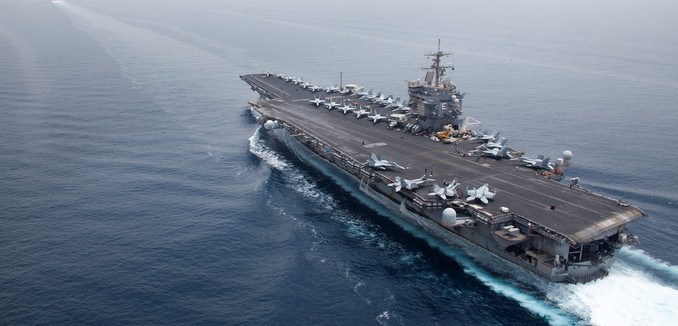Iran-backed Houthi rebels reportedly planted a naval mine in the Bab al-Mandeb strait, killing two Yemeni sailors in an explosion on Friday and raising concerns over threats to the free passage of vessels through the strategic waterway.
Yemeni security officials said that eight sailors were also wounded in the blast, including the ship’s captain, the Associated Press reported.
Members of the Saudi-led coalition attempting to restore the American-backed Yemeni government in Sana’a charged that the Houthis had planted the mine. It is the first explosion by a naval mine in the area since the Houthis seized Yemen’s capital in November 2014.
The United States Office of Naval Intelligence warned last month that Houthi “naval mining threatens commercial ships traveling … near Mokha port and the Bab al Mandab Strait,” the American Enterprise Institute’s Critical Threats Project reported.
An estimated 4.7 million barrels of oil pass daily through the strait, which links the Gulf of Aden to the Red Sea.
Iran and its proxies have significantly stepped up their aggressive naval behavior in recent years. Gen. Joseph Votel, head of the U.S. Central Command, accused Iran in October of orchestrating several attacks against U.S. vessels in the area that month.
Ten American sailors and their two boats were seized by naval forces belonging to Iran’s Islamic Revolutionary Guard Corps in January 2016, in violation of international law. Iran portrayed their capture as a victory against the U.S., releasing the sailors after claiming that Washington apologized for the incident. Iran’s supreme leader, Ayatollah Ali Khamenei, called the seizure of the Americans “God’s deed” and issued medals to the commanders involved, while the IRGC announced plans to build a statue to commemorate the incident.
In May 2016, the IRGC’s deputy commander threatened to close the Persian Gulf’s strategic Straits of Hormuz to the U.S. and its allies if they “threaten us,” adding: “Americans cannot make safe any part of the world.”
The U.S. Navy reported in July that there were nearly 300 encounters or “interactions” between American and Iranian naval vessels in the Persian Gulf in 2015. While most of the encounters were not considered to be harassment, the behavior of the Iranian navy was found to be less disciplined than that of other navies. Lt. Forrest Griggs, the operations officer of the USS New Orleans, explained that risks arise from the unpredictable behavior and uncertain intent of the Iranian vessels. “It’s very common for them to come up to within 300, 500 yards of us, and then they’ll turn, or parallel us and stop,” he told Fox.
Vice Adm. Kevin Donegan, the commander of the Navy’s Fifth Fleet, observed in November 2015 that Iran’s “malign behavior” at sea had not changed since the announcement of the nuclear deal four months earlier.
[Photo: U.S. Navy / Flickr ]




